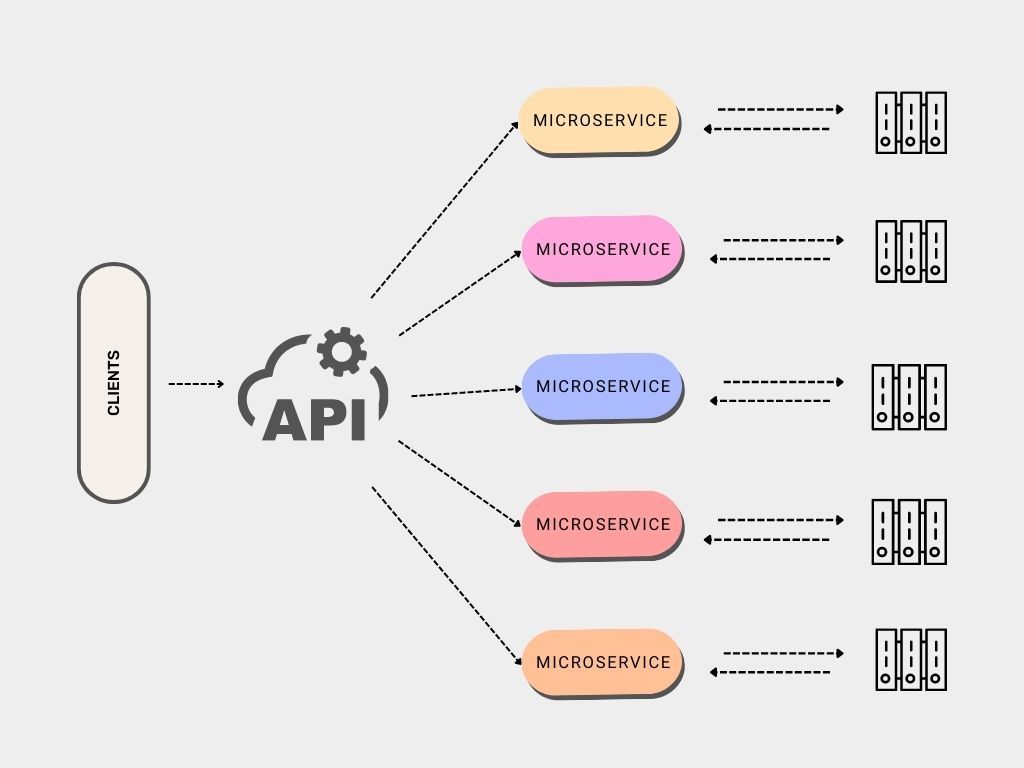A microservice architecture is a system in which a large application consists of small services that work and communicate with each other using APIs.
These services are highly independent and loosely coupled. This makes them easy to test and maintain which in turn speeds up the development process.
How Microservices Work
Before microservices, the standard way of developing applications was using a monolithic architecture. Such applications were single, independent units. Their components—like the user interface, business logic, and data storage—were written in a single code base.
While monolith apps are easy to design and develop, the resulting code can be difficult to understand, scale, and maintain.
In a microservice architecture, you break down a large application into smaller, autonomous services. Each service is responsible for a single application task and communicates with the others using APIs.
Each service also contains all necessary dependencies and you don’t need to link it to external resources.
Microservices are great for applications developed by large organizations. One team can be working on one service while a second team works on another. You can then test and deploy these services separately.
An example of a microservices system is an e-commerce application with separate services to handle the UI, shopping cart, inventory, and orders.
Advantages of a Microservices Architecture
Flexibility and Scalability
Since each microservice is independent of the rest, you can develop and deploy them separately. If a particular service becomes slow, you can run it on more powerful hardware or add more processors to the servers running it.
You can also run two instances of a microservice in parallel.
Ease of Maintenance and Updates
If you build an application following the microservices architecture, you can upgrade it in stages. You can make changes to a service and update it without affecting other parts of the application.
Potential for Faster Development and Deployment
Small teams work together to develop each microservice. Since the microservice performs a specific task, members of a team can focus on that task alone.
Additionally, coordination and decision-making across a small team are faster than in a large team. This leads to a faster development cycle.
Independent Technology Choices
You can choose to develop a microservice in a different programming language from the other microservices. For example, you can use Python to develop one microservice and JavaScript for another. You can also use different database management services for each. Ultimately, you end up building services with the most appropriate technology or tool.
Challenges of Implementing a Microservices Architecture
The Complexity of Coordinating Different Services
An application can consist of many services that need to communicate with each other. These communication channels have to be secure and robust for the application to perform as intended.
Debugging and Testing Issues
Errors that you can isolate to a single service are easier to solve. However, when these errors span multiple services, debugging becomes more of a challenge. Likewise, writing integration tests for multiple services can be difficult.
Potential for Increased Overhead
As mentioned, each service is independent of the others and has its own resources. This can get expensive since each service requires dedicated infrastructure consisting of servers, continuous integration tools, and databases, among others.
When to Use a Microservices Architecture
The microservices architecture is not suitable for all applications. It can be expensive to build and manage.
Before deciding to use a microservices architecture, consider the size and complexity of your application. You’ll see more benefit from breaking down a large application into manageable resources than a small application. At a small enough size, it may be a waste of resources altogether.
However, if you have a large team of developers who need to understand a code base quickly, or want to use different technologies, a microservices architecture may be the way to go.


